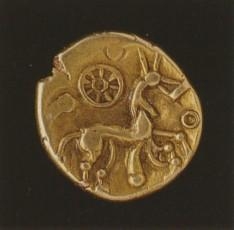1st Century AD
Type:
Coin
Material / technique:
Gold
Dimensions:
Diameter: 1.8 cms
Type of acquisition:
Heritage Fund acquisition
Year of acquisition:
1992
Depository institution:
Musées Royaux d’Art et d’Histoire, Brussels
Collection:
